How we reduced our food waste…and you can too!

You would think people would stop wasting so much food, especially with food shortages and how much the cost of fresh produce (and everything else) has risen over the last few years. Unfortunately this is not the case, with most households actually wasting more food than ever during the pandemic!
According to Stop Food Waste Australia CEO Dr Steven Lapidge, the average Australian adult creates more than 300 kilograms of food waste every year!
We were so shocked when we heard this statistic! My jaw literally dropped.
Maybe this is just shocking to us because we have found a few different ways to reduce our food waste over the years and now we probably only produce a few kilos a year between us, if that. Read on to find out how we do it!
Don’t rely on recipe books and learn how to substitute ingredients
Recipes are important for baking, making preserves and a few other things where ratios and specific amounts and times are important, but for general cooking we don’t really use them.
Sometimes we look at recipes for ideas or inspiration, or use them as a rough guide, but we don’t stick to them. We like to go by taste and we prefer to use what we already have. Yes, the flavour is always slightly different, but that’s what keeps things interesting!
We do have a book of our own handwritten recipes for certain things like spice blends, sauces and curries, but it’s mostly just so we can remember what we actually put in them.
Cooking with recipes often wastes food, because you tend to shop for the specific recipe and forget about things you already have in the fridge, pantry or garden.
A lot of foods have similar flavour profiles to other foods and can be swapped out pretty successfully.
For example: pretty much any leafy green vegetable can be substituted for any other leafy green; any root veg can be substituted for any other root veg; any soft herb can be substituted for any other soft herb; the list goes on.
Don’t be afraid to experiment!
Some of our favourite meals and other elements came about by creatively using up what we already had growing in the garden in unexpected ways. Like carrot top and lemon balm pesto or sauteed radish greens with garlic.
Eat seasonally and locally – grow your own food
Most Australians live in cities, hardly anyone grows their own food, and supermarkets are packed with out of season, unblemished “fresh” produce year round.
This means that most people don’t really eat locally or seasonally anymore. Food has to be transported much further (adding carbon miles and fuel costs), and stored for longer.
To achieve this, fruits and vegetables are bred to look good, and last longer. Which sounds great in theory, but this significantly reduces or eliminates nutritional value altogether, while also producing bland foods which aren’t very appealing, and often don’t get eaten.
A lot of the “fresh produce” in supermarkets is actually weeks or months old, because most modern humans do not eat seasonally. Fruits and veggies have to be picked unripe and stored and transported with inert gasses to prevent decay. Not to mention that a lot of out of season produce comes from overseas, even here in Australia, a major foodbowl of the world.
Just so we have access to whatevever food we want, when we want. This is deeply unnatural, not to mention unhealthy. Fresh produce should be grown for the flavour and nutritional value, not the ability to rot more slowly.
If you get into the habit of eating seasonally, by growing your own produce or at the very least shopping locally at a farmers market, you can avoid all of this.
I feel like you’re also way more likely to try to use things up, when you put in all the time and effort of growing them yourself!
We have a pretty small garden space because we’re only on a tenth of an acre here, although we do have a four acre block (waiting for us to finish fixing the 132 year old house here). With plans for wicking beds, a food forest, and a wildlife corridor packed with bush tucker plants.
Here we have tried to prioritise medicinal and culinary herbs, greens, onions, garlic, potatoes, and perennial food plants (Dan’s specialty). We also usually get a decent amount of tomatoes and berries over summer.
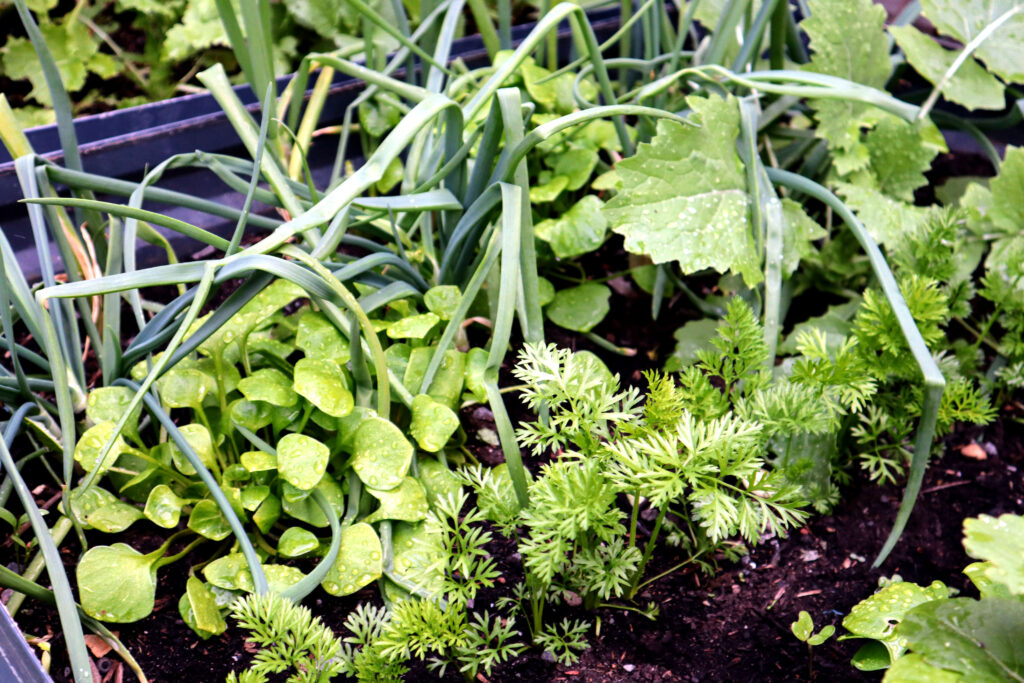
Miner’s Lettuce (the heart shaped leaves shown above) is an amazing plant for reducing food waste. It tastes just like lettuce but grows pretty much year round, self seeds readily, and is very slow to bolt. You just pick it as you need it, so you can say goodbye to slimy bags of lettuce in the fridge.
We haven’t had to buy any greens, spring onions, or culinary herbs in a couple of years. Most of our perennials are still small, but they multiply every year. We grow or forage more than half the medicinal herbs we use.
Forage
I encourage everyone to get into foraging. It’s the absolute best way to learn about local, seasonal eating. Go foraging with a local forager or buy yourself a foraging field guide to your local area, and go eat some weeds!
It’s shocking when you discover how much perfectly edible and highly nutritious FREE food is just sitting around.
There are a few foraging guidelines to be aware of though:
Always get help to verify your identification until you are very confident in identifying a plant on your own. Ask someone you know and trust with foraging experience, or post some detailed pics in a local fb foraging group. You can use Google lens or plant ID apps, but these are definitely not foolproof!
Never taste a plant unless you are 100% confident in your identification.
Don’t ever try to identify mushrooms on your own unless you have been taught by a seasoned mushroom hunter – there are way too many deadly lookalikes.
Don’t get greedy – if it’s the only one you see, leave it be. Even if there are several, leave it be. Only pick a small amount , and only from a thriving patch or area. Always leave more than enough for other foragers, animals and for the plant to reproduce.
Be respectful – you are a steward of the land, not a consumer, act accordingly. Don’t go trampling around ripping up or hacking off plants or disturbing animal habitats.
Be grateful – thank the plant for its food/medicine. Best practice is to ask wild plants for permission to harvest first, but you have to be sensitive enough to hear the answer. You can also spend time with the plants, leave offerings of water, a hair from your head, sing a song, etc. Whatever feels right, is right. Just don’t leave anything manmade which could hurt an animal or damage the ecosystem.
Be careful to stay away from potential contamination – busy roads, built up areas, and anything which may have been sprayed with herbicide.

Don’t throw food out just because it’s past the Best Before or Expiry date
Unlike Use By dates, which tell you how soon you should use things like meat or dairy for health and safety reasons, Best Before or Expiry dates are not a hard and fast rule! Food isn’t automatically off, stale or mouldy just because it’s past its Best Before date.
Many foods which don’t even go bad (like salt and sugar) still have Best Before and Expiry dates. Many perishable foods (like yoghurt and hard cheese and vegetables) can still be good enough to eat for weeks after their Best Before date.
Good bread doesn’t go mouldy. Instead it just goes stale, but fortunately it is still usable. French toast or bread and butter pudding are great ways to use up stale bread because the egg and milk rehydrate the bread (and make it delicious).
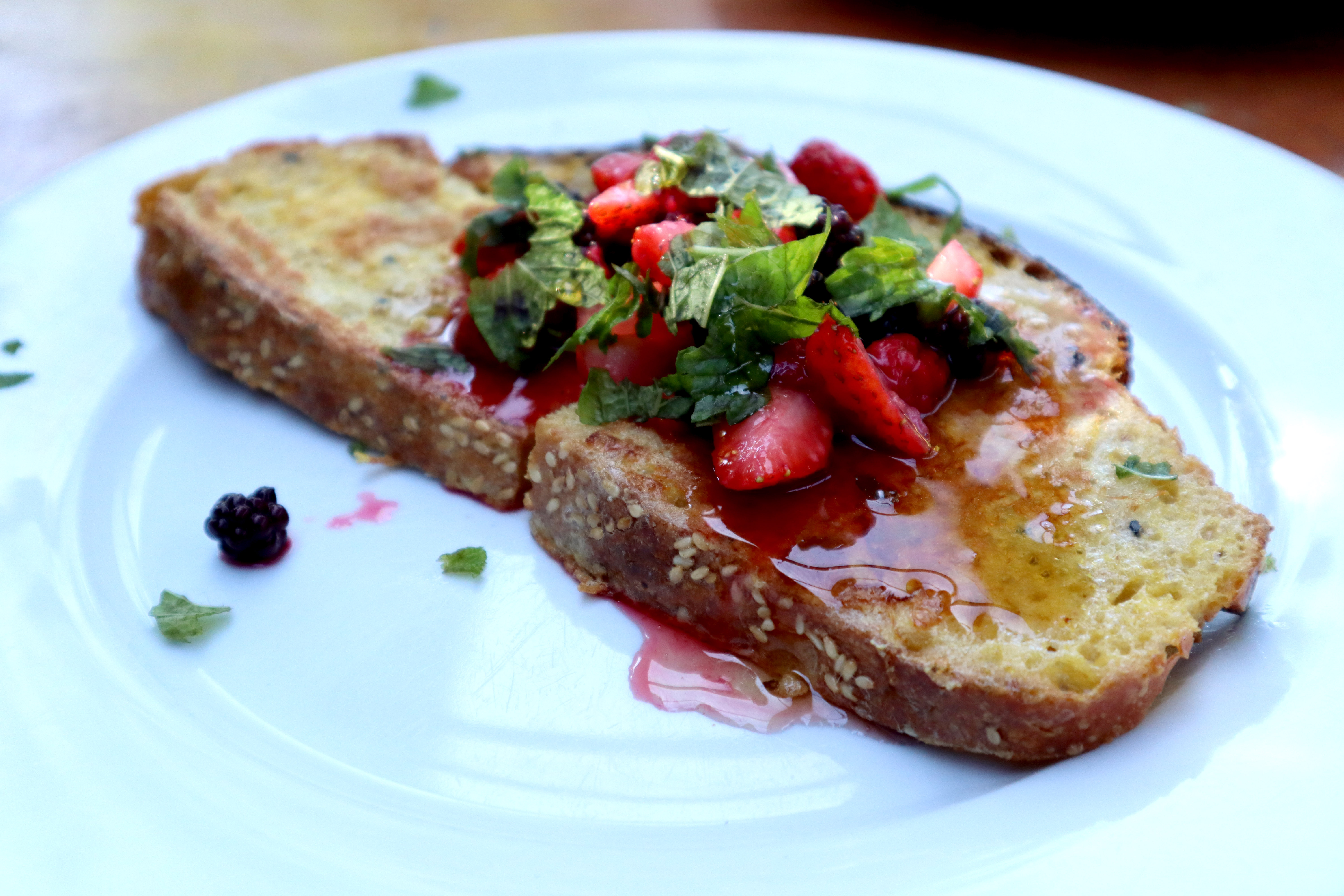
You do need to use common sense obviously, but treat Best Before dates like more of a rough guide, not a rule. Fresh produce is only bad when you can see, smell or taste that it’s bad.
Do a visual inspection for mouldy, brown or gooey spots. Do a smell test. If it smells fine, have a tiny nibble or taste. If it looks, smells and tastes fine, it’s probably fine!
Companies these days are so afraid of being sued for giving customers food poison, that they don’t really trust their customers to use their own judgement. They give Best Before or expiry dates long before the food will actually turn bad, to eliminate any risk of litigation.

Do frequent produce audits and plan to use what you have before going grocery shopping
In March 2020, when the pandemic was kicking off, we were concerned about the availability of fresh produce, so we made an even more concerted effort to not waste any food.
We had already stocked up on pantry and household essentials weeks before the panic buying started (we saw what was happening in other countries and knew what was coming), but fresh produce can only last so long, and our fridge is tiny!
It turned out that we were able to still get most of the fresh produce we needed after the initial insanity, but we discovered some good habits anyway.
We got into the habit of checking all the fresh produce at least once a week. This stopped things from going bad, because we were able to use them up when they were not quite looking so fresh, but before it was too late.
Every time we did an audit, we would separate the produce that needed to be used asap. Then we would try to plan dinner around those specific ingredients, so they got used first.
For example, overripe cherry tomatoes, a slightly soft zucchini, half an onion, a nub of carrot and a scrap of capsicum, would become delicious pasta sauce with the addition of some fresh herbs from the garden.
The day before grocery shopping is the best time to do a food audit. Look at the less than fresh veg, all the little scraps of veg, packets, jars or containers with only a bit of stuff left inside, anything else that should be used up soon.
Try to plan a meal or two around those ingredients. You don’t have to use only those ingredients, but try to use all of them. It’s best to try to use them up before you go shopping, but if you can’t, separate them and make sure you use them as soon as possible after you go shopping.
This not only drastically reduces food waste and saves you money, it also makes room in the fridge for your new grocery shopping.
This is also a great time to make your shopping list, because you can see exactly what you have left and what you need to buy. You can also plan a few meals ahead to use up the ingredients you have left over, and add whatever you might need for those meals to your shopping list.
If you don’t do an audit and write a mindful shopping list, you usually end up buying things you don’t really need, instead of using up things you already have, which is a waste of money and food.
You will probably also end up just throwing things out because you don’t have any plans for them and you need space for the new groceries when you get home from the store.
These are some of our favourite ways to use up leftover bits of food:
You can make pesto out of pretty much any leafy green veg, not just basil. Some of our favorites are rocket, carrot top, parsley or coriander.
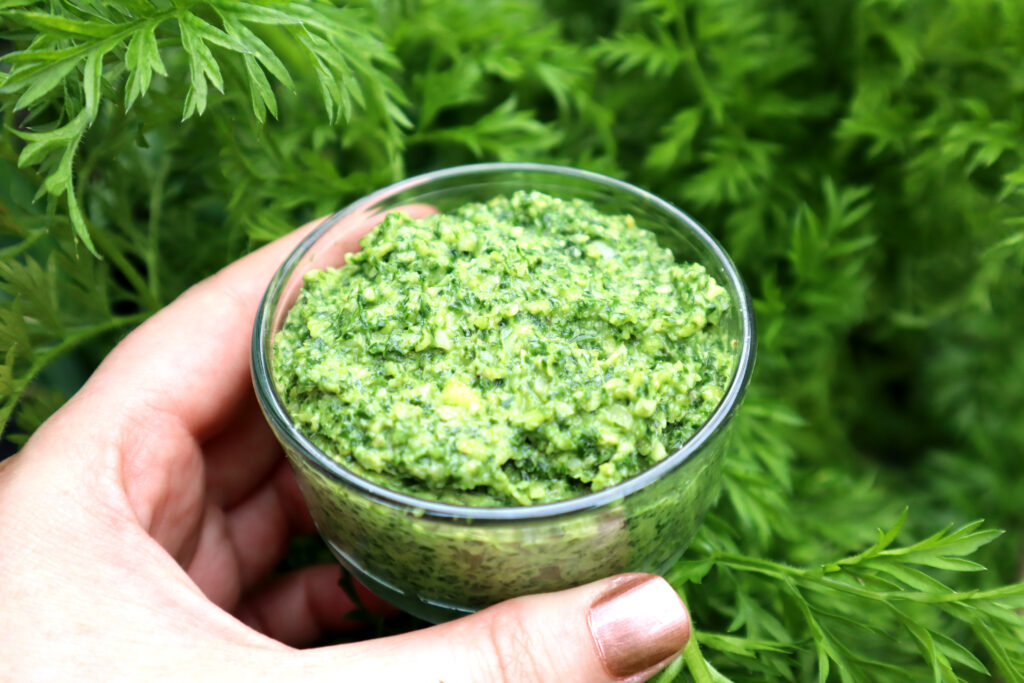
Pasta sauce is a great way to use up tomatoes, zucchini, capsicum, bacon etc. Savoury muffins, tarts, quiches and frittatas can use up eggs, ham, cheese and all kinds of veg scraps.
Soup of any kind is also the perfect way to use up scrappy veg. My favourite recipe for the day before shopping day is Scrap Soup aka Minestrone.
Stale bread crusts also make excellent breadcrumbs or croutons, like our Crunchy Herbed Croutons shown below.
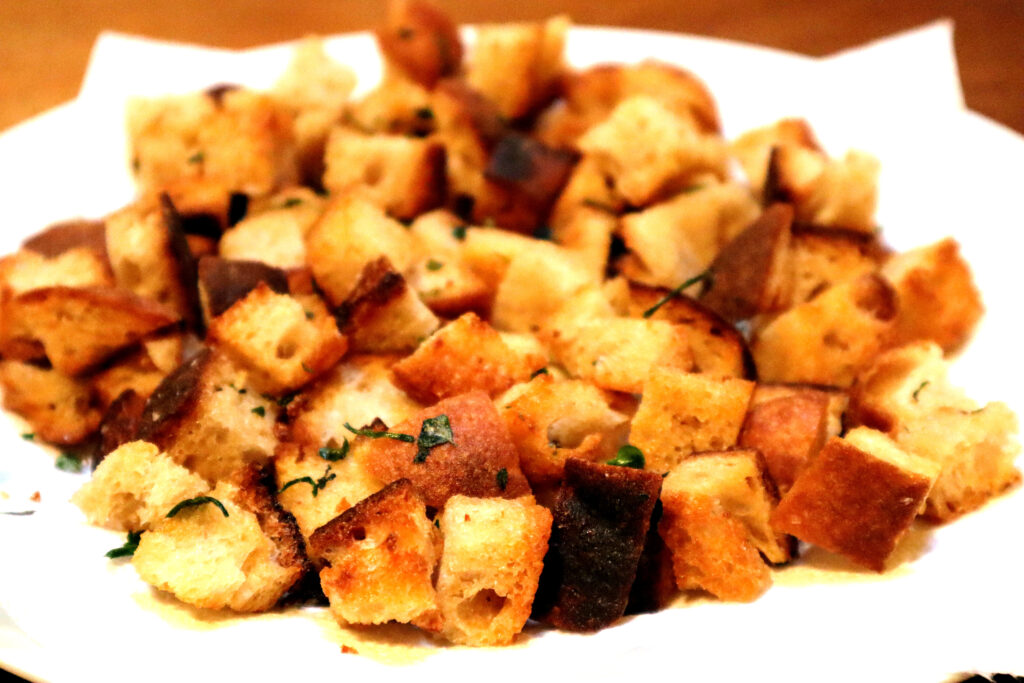
Rotate your food stores
When you go to put away your groceries, put the new items behind the old ones. This way you always use up the older food first.
Doing an audit of your pantry items about every three months is also a good way to make sure things that need to be used are actually getting used. We also made a “use next” section for pantry items that were near their best before or use by dates.
Buy loose fruits and vegetables
When you buy a pack of fruits or vegetables, not only are you consuming more plastic, but you’re probably buying more than you need or can realistically use. You can easily make or buy your own sustainable produce bags.
Consider using the bits you would normally discard
It’s shocking how much edible food is routinely thrown out, like broccoli and cauliflower stems, celery leaves, the green parts of leeks etc.
If you grow your own veg, you can use the leaves of most root veg as greens, like carrots, beetroot, radishes, turnips, etc (not parsnip though).
We recently had some wombok cabbages and daikon radishes which didn’t produce proper cabbages or radishes because of the crazy weather we’d had, but we still managed to use up the greens, and they were delicious.
You don’t need to peel carrots or potatoes either, most of the nutrients are actually in or just below the skin! If you don’t want to use these scraps directly in your cooking, you can definitely use them to make veggie stock.
You can even just chuck random peels and trimmings in a bag or container in the freezer as you go along and make stock when you have enough. Just add scraps, fresh herbs and water and cook until it reduces.
If you eat meat, fish or seafood, you can also add meat bones or a carcass and make an amazing stock out of waste foods.
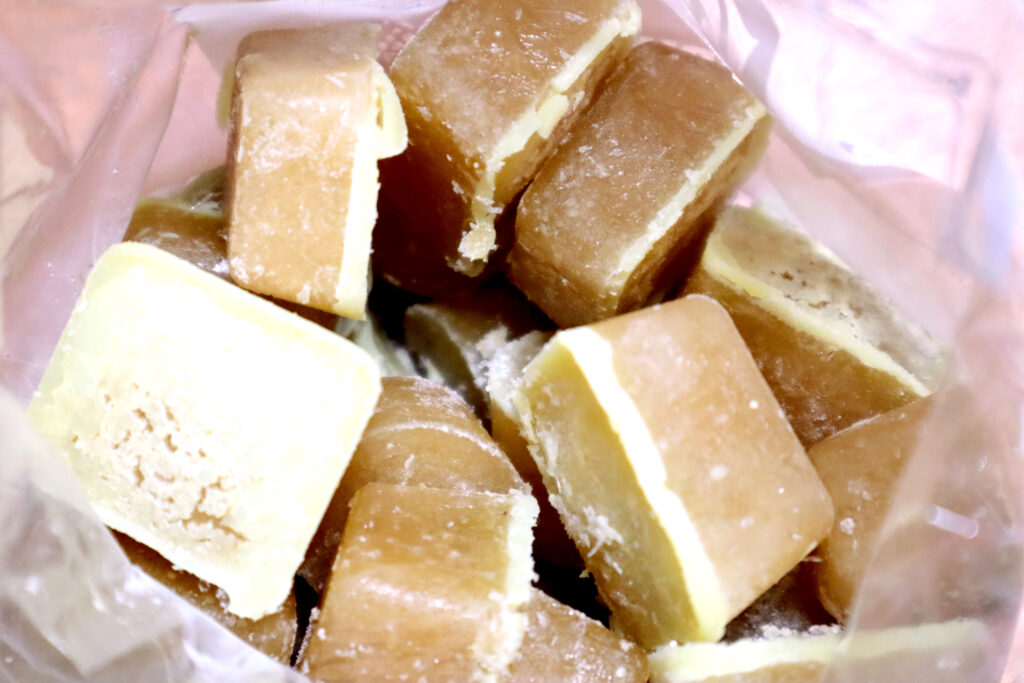
We make our own chicken stock from roast chicken carcasses and veg scraps and recently started freezing batches in icecube trays.
This way we can just grab one or two out of the freezer and add them to brown rice, cous cous, gravy and other sauces. It’s been an absolute flavour game changer!
We also sometimes make “dog blocks” if the chicken carcass is a bit too old to make stock (sometimes it’s too hot that day or we’re too busy).
We just boil the carcass in a pot of water with nothing added. We cool, strain and freeze the broth in ice cube trays. It’s the perfect cooling and hydrating snack for Matilda on hot days!
Compost
Even if you’re diligent with your food audits and using up scrappy food, there will still be some stuff you can’t use, like banana peels, onion skins, eggshells, avocado skin etc. If you use paper towels, newspapers etc you can also compost them. Composting closes the food waste cycle, and gives you beautiful rich soil to use in your garden.
If you have a worm farm instead (in some ways this is better than compost because you get the beautiful fertilising worm juice and castings) just be aware that there are a few things worms don’t like.
Some small bits here and there are probably ok, but it’s best to avoid citrus peels, lots of onions, and eggshells. Definitely avoid meat, dairy and cooked foods. The instructions that come with your worm farm should give more details.
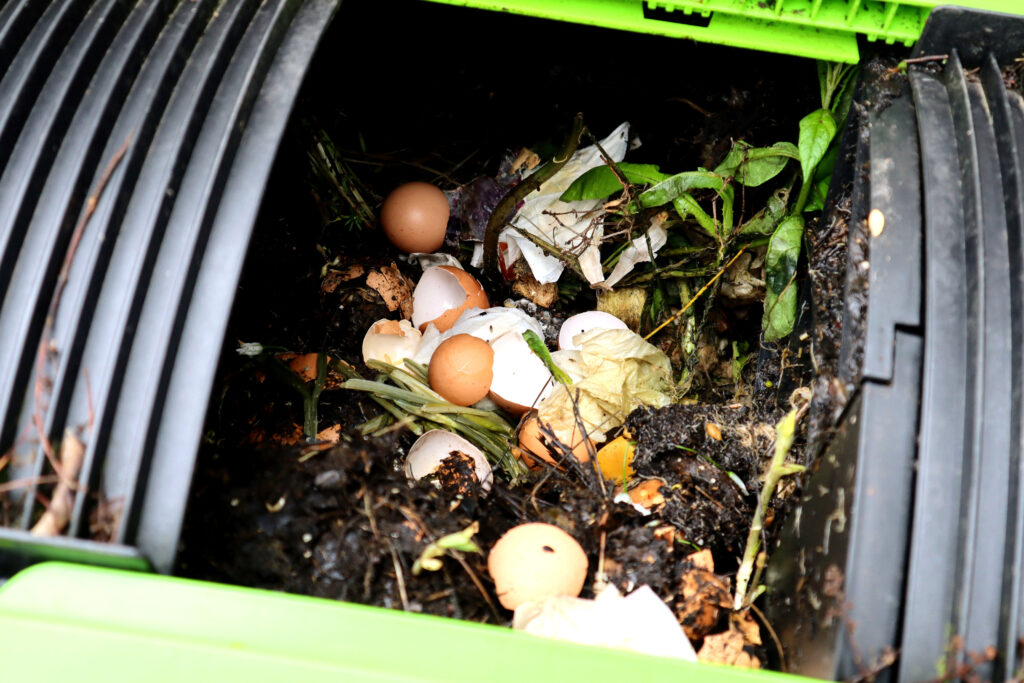
In conclusion
There are plenty of ways to reduce your food waste, and anyone can do it. You just need to have an open mind and a desire to do better.
If 300kg + per adult, per year of food waste is normal, we’ve reduced ours by about 99.5%. With relatively little effort. Imagine if every Australian did the same! Even just halving the amount of food waste you produce would make a big difference.
Have you tried using any of these methods to reduce your food waste?
Do you have any other other tips for reducing food waste?
I’d love to hear your experiences in the comments!
[optin-monster-inline slug=”qdfs5cowsxbtmmucnrtm”]